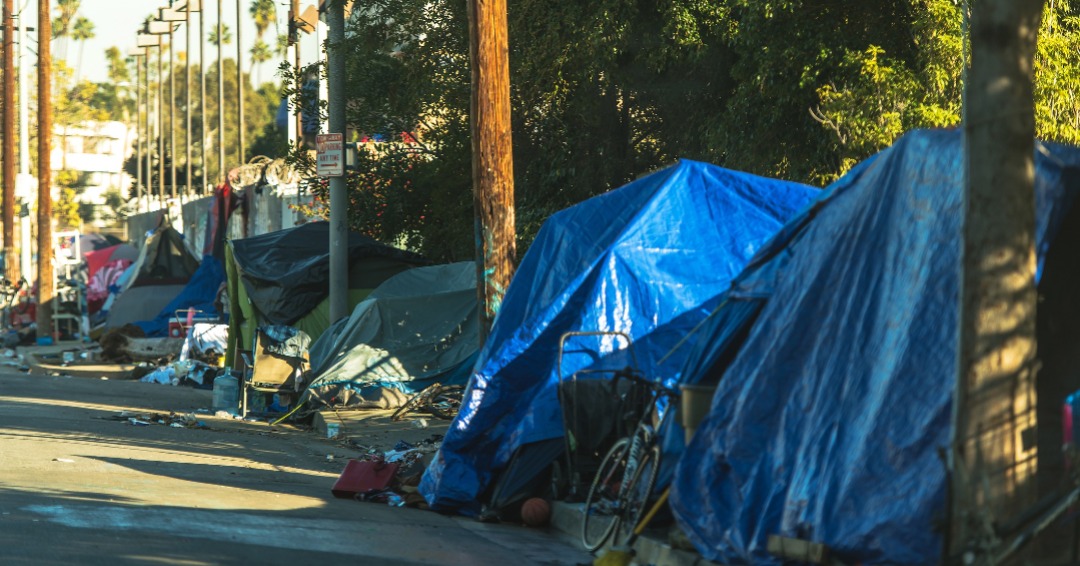There Could Be a Shift From the Freeway Into the City’s Streets and Sidewalks
Although a recent green light from Sacramento yields a strong crackdown on homeless encampments, the directive only pertains to state-owned property; thus, potentially exacerbating transient populations of certain spots under different orders, including the charter city of Santa Monica.
On Thursday, California Gov. Gavin Newsom issued an executive order for state agencies and departments to clean up homeless encampments “including by taking necessary and deliberate steps to notify and support the people inhabiting the encampment prior to removal.”
The move comes weeks after the U.S. Supreme Court rejected arguments that “anti-camping” ordinances violate a Constitutional ban on “cruel and unusual” punishment.
That ruling–in favor of an Oregon city that ticketed homeless people for sleeping outside–gives local governments more authority to clear street encampments. Chris Herring, assistant professor of sociology at UCLA, told CNN that the primary difference made by the ruling is, whereas localities were required to make shelter offers before removing encampments, they are now free to apprehend people even without available shelter.
“This executive order directs state agencies to move urgently to address dangerous encampments while supporting and assisting the individuals living in them — and provides guidance for cities and counties to do the same.” Newsom said in a statement. “The state has been hard at work to address this crisis on our streets. There are simply no more excuses. It’s time for everyone to do their part.”
Santa Monica is mostly off limits under the new directive.
While the I-10 freeway is maintained by state personnel (and is often the site of many encampments and consequent arson incidents), most everything else in the beachside town is under the authority of either the County or City. Although it’s a state beach, Santa Monica Beach isn’t state workers’ responsibility because the City of Santa Monica operates it on the state’s behalf, said Santa Monica Mayor Phil Brock.
Encampment residents currently along the freeway (unless immediately provided with shelter) could very well begin setting up their homes on streets and sidewalks that are not subject to the new rule changes; an issue that already draws more ire from Santa Monica locals than any other.
“I hope they will pay more attention to the problems we have on the embankments of the I-10 freeway,” said Brock. “The concern is: When Caltrans enforces encampments on freeways, are they going to move those people out or just push them into whatever city they’re in?”
“For Santa Monica, it’s kind of an empty bottle of milk. You’re not seeing anything that helps us enforce standards in the city or helps get us assistance to get people off the streets. We’re in a crisis in Santa Monica. We need help. But this doesn’t directly give us any help right now.” said Brock. “It doesn’t help to play whack-a-mole. We have to find ways to stop people from deciding they can camp in Santa Monica or live on the beach or in Downtown.”
However, with the Governor’s order in place, and with other California localities such as San Francisco acting in their own way to clear sidewalks of tattered tents, Santa Monica City Council may now have the fiber to soon give similar instructions to SMPD.
An agenda item on the matter could make the council’s Aug. 27 meeting, according to Brock.
“I will personally take a strong stand in trying to end encampments quickly, and I hope the governor will add funds to help get those people into supportive or temporary housing somewhere in the state,” said Brock.
As part of the recent order, Gov. Newsom urged California cities and localities to take similar action. According to a press release, local governments are encouraged to apply for the $3.3 billion in competitive grant funding from Proposition 1 to provide care to individuals experiencing mental health conditions and substance use disorders.
“The City Attorney’s Office continues to evaluate the recent Supreme Court decision on the Grants Pass matter and is also now assessing potential regional impacts from Gov. Newsom’s executive order for state agencies on encampment resolution.” Lauren G. Howland, Communications and Public Information Manager of Santa Monica, said in an emailed statement. “Going forward, the city will continue to base policies and programs on best practices, at the direction of the City Council, and implement any new direction in close coordination with other regional entities.”
Recent results from The 2024 Greater Los Angeles Homeless Count showed Santa Monica’s transient population at 774 people–a 6% decrease from the previous year. According to Brock, there were approximately 35 open spots among the City’s homeless shelter services as of Sunday.
Approximately 27.56% of the 653,100 homeless people in the United States reside in California, according to a 2023 assessment report from the US Department of Housing and Urban Development. Over the last three years, the state has “resolved” over 11,000 encampments and removed 248,275 cubic yards of debris from encampments along the state right of way, according to a press release from the Governor.













